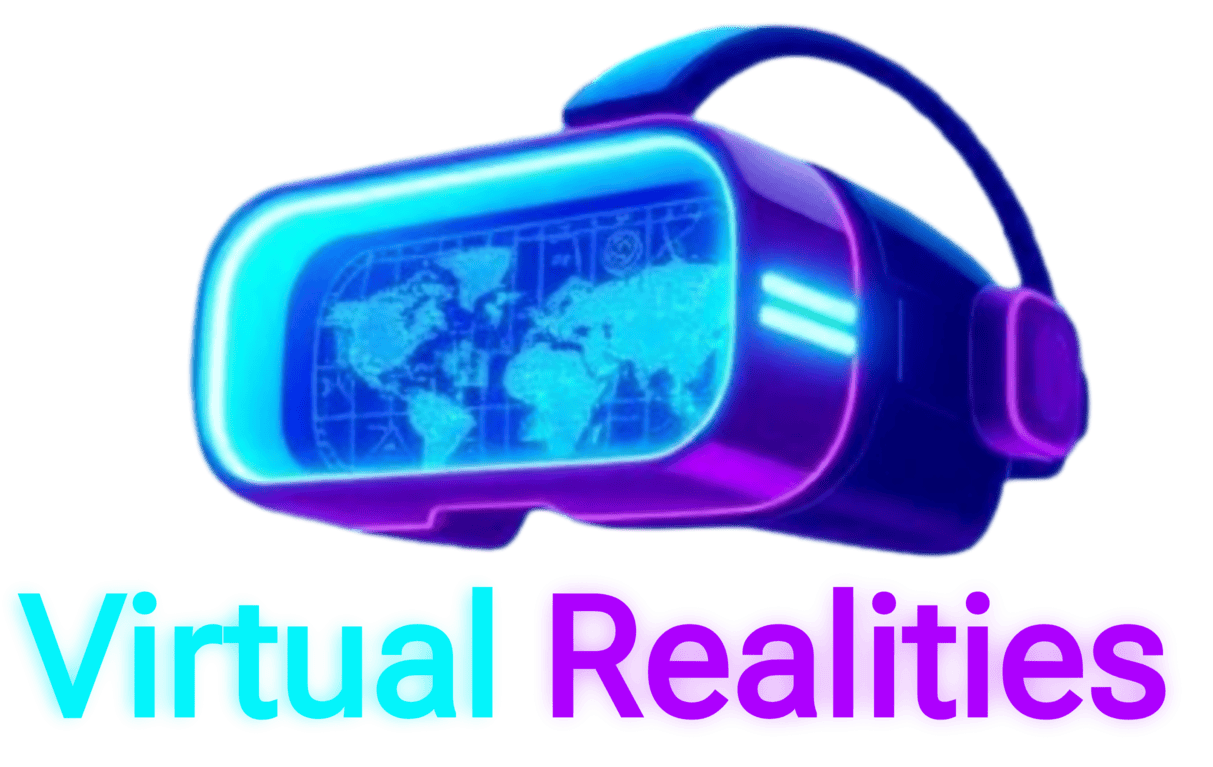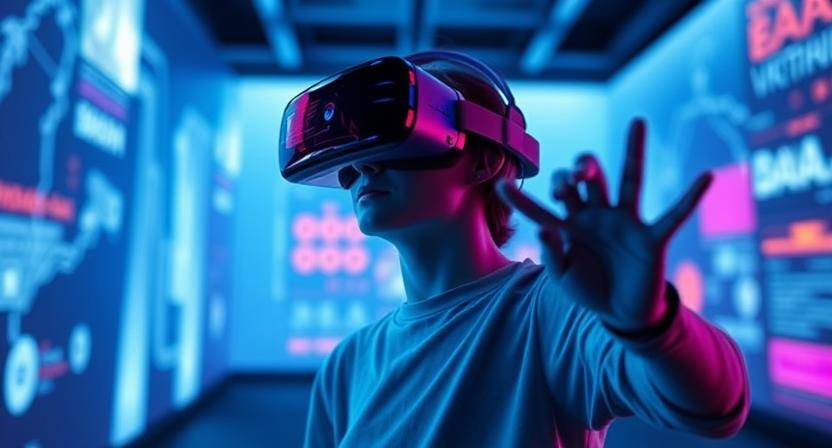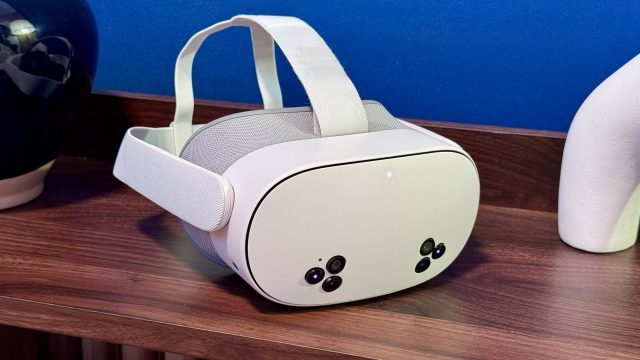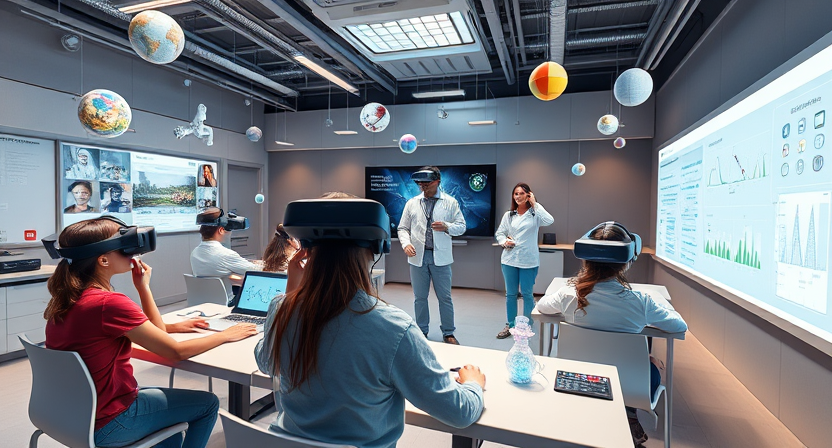The Early Beginnings of Virtual Reality

Virtual reality (VR) traces its origins back to the mid-20th century when innovators and visionaries first conceptualized the idea of a simulated environment that users could interact with. Pioneers like Morton Heilig and his Sensorama invention in the 1950s laid the groundwork for what would later become modern VR technology. Heilig’s Sensorama was a type of arcade-style theater cabinet that engaged users with immersive visuals, sounds, and even smells, setting the stage for future advancements in the field.
Building upon Heilig’s early experiments, computer scientists and researchers in the 1960s and 1970s began developing primitive forms of virtual reality. One notable project during this time was Ivan Sutherland’s creation of the first head-mounted display system called the “Sword of Damocles.” This device, though basic by today’s standards, marked a significant step forward in the development of VR technology, laying the foundation for the immersive and interactive experiences we enjoy today.
The Influence of Science Fiction on Virtual Reality Development
Science fiction has long been a source of inspiration for the development of virtual reality technology. From the immersive virtual worlds depicted in novels and films to the idea of alternate realities and simulated environments, science fiction has planted seeds of imagination in the minds of innovators. The concept of stepping into a virtual space where one can interact with a digital environment and other avatars has been a recurring theme in science fiction, driving researchers and developers to turn these imaginative visions into reality.
Authors like William Gibson with his novel “Neuromancer” and movies like “The Matrix” have captured the imagination of many, showcasing the possibilities of virtual reality and its potential impact on society. These imaginative works have not only entertained audiences but also sparked a sense of wonder and curiosity about the possibilities of virtual environments. As a result, the influence of science fiction on virtual reality development cannot be understated, as it continues to shape the way we perceive and interact with digital worlds.
The First Virtual Reality Devices
One of the earliest attempts at creating a virtual reality device was the Sensorama developed by Morton Heilig in the 1950s. This contraption aimed to immerse the viewer in a multisensory cinematic experience, complete with 3D visuals, stereo sound, vibrating seats, and even aromas to enhance the realism of the virtual world.
Another significant advancement in virtual reality devices came in the form of the Sword of Damocles, created by Ivan Sutherland and his team at Harvard University in the 1960s. This device was a head-mounted display that suspended a heavy apparatus above the user’s head, earning it the fitting nickname due to its precarious setup. Despite its cumbersome nature, the Sword of Damocles laid the groundwork for future developments in virtual reality technology.
Advancements in Virtual Reality Technology
Virtual reality technology has seen significant advancements in recent years, revolutionizing various industries and experiences. Improved display resolutions and field of view have enhanced the visual realism in virtual environments, making the user experience more immersive and engaging. Additionally, the development of more sophisticated tracking systems has allowed for better motion detection and interaction within the virtual world.
Furthermore, innovations in haptic feedback technology have enabled users to feel more connected to the virtual environment through tactile sensations and vibrations. This has greatly enhanced the level of realism and engagement in virtual reality experiences, particularly in gaming and simulations. As virtual reality technology continues to evolve, we can expect even more groundbreaking advancements that will further blur the lines between the virtual and physical worlds.
Virtual Reality in Gaming
The world of gaming has been significantly revolutionized by the introduction of virtual reality technology. Players can now immerse themselves in a 3D environment that simulates a realistic gaming experience. Virtual reality headsets transport gamers into a whole new world where they can interact with their surroundings and engage in gameplay like never before.
The ability to physically move and manipulate objects within a virtual environment adds a new layer of realism to gaming. This heightened level of interactivity and immersion creates a more engaging and dynamic gaming experience for players. As virtual reality continues to advance, the possibilities for innovative and captivating gaming experiences are limitless, making it an exciting time for both gamers and developers alike.
Virtual Reality in Healthcare

Virtual Reality in Healthcare has revolutionized various aspects of medical treatment and patient care. Healthcare professionals are using immersive virtual reality experiences to distract patients during painful procedures, reduce anxiety in individuals with phobias, and manage chronic pain. By transporting patients to computer-generated environments, VR technology has proven to be an effective tool in enhancing the overall patient experience and improving treatment outcomes.
Additionally, virtual reality is being utilized for medical training purposes, allowing students and healthcare professionals to practice surgical procedures in a simulated and risk-free environment. This hands-on approach helps medical professionals develop and hone their skills while mitigating potential risks to real patients. With the ability to create lifelike scenarios and interactive simulations, virtual reality is transforming the landscape of healthcare education and training.
Virtual Reality in Education
Virtual reality (VR) has transformed the landscape of education by providing immersive and interactive experiences. Students now have the opportunity to delve into historical events, explore complex scientific concepts, and even travel to distant lands, all from the comfort of their classrooms. By incorporating VR technology into educational practices, educators can cultivate a dynamic and engaging learning environment that caters to diverse learning styles.
Moreover, VR has the potential to bridge the gap between theoretical knowledge and practical application. For instance, medical students can simulate surgeries, engineering students can design prototypes, and language learners can engage in real-life conversations with native speakers. This hands-on approach not only enhances retention and understanding but also fosters critical thinking and problem-solving skills essential for success in the 21st-century workforce.
Virtual Reality in Military Training
Military training has seen a significant evolution with the integration of virtual reality (VR) technology. This innovative tool allows armed forces to simulate realistic combat scenarios, providing soldiers with a virtual environment to hone their skills and enhance their tactical abilities. By immersing trainees in dynamic simulations, VR enables a hands-on approach to learning that can better prepare military personnel for the complexities of modern warfare.
The utilization of VR in military training offers numerous benefits, such as cost-effectiveness and increased safety. Traditional training methods often require extensive resources and the use of live ammunition, which can be both expensive and hazardous. With VR simulation, training exercises can be conducted in a controlled and repeatable environment, reducing the risk of injury and minimizing the need for costly equipment. Additionally, VR technology allows for the creation of customizable scenarios that can adapt to individual training needs, offering a versatile and efficient training solution for military personnel.
Virtual Reality in Architecture and Design
Virtual Reality technology has revolutionized the way architects and designers conceptualize, plan, and present their projects. By immersing users in a digitally simulated environment, VR allows them to walk through and interact with a space before it is even built. This level of spatial understanding not only enhances the design process but also enables clients to visualize the final result more accurately.
Architects and designers can utilize VR to test different design options, evaluate spatial relationships, and analyze lighting and acoustics within a virtual environment. This technology not only streamlines the decision-making process but also ensures that the final design meets the intended objectives. Additionally, VR in architecture and design has opened up new opportunities for collaboration among team members and clients, enabling real-time feedback and communication throughout the project lifecycle.
Virtual Reality in Entertainment
The entertainment industry has been revolutionized by the integration of virtual reality (VR) technology. Through VR headsets, users can now immerse themselves in fully interactive and immersive experiences, blurring the lines between reality and fiction. This has led to the creation of innovative storytelling methods in movies, television, and even live performances, providing audiences with a new level of engagement and excitement.
In the world of gaming, virtual reality has taken the experience to a whole new level. Players can now step into the game world and interact with characters and environments as if they were physically present. This has opened up a whole new dimension of possibilities in game design, offering gamers a more immersive and realistic experience than ever before. Additionally, VR technology has also been utilized in amusement parks and virtual theme park experiences, offering visitors thrilling and unforgettable adventures.
The Impact of Virtual Reality on Social Interaction

Virtual reality (VR) technology has revolutionized the way we interact with others in the digital realm. By immersing users in computer-generated environments, VR has the power to transcend physical limitations and connect people from around the world in shared virtual spaces. As a result, social interactions in VR have become more immersive, engaging, and lifelike than ever before.
In virtual reality environments, individuals can communicate with others through avatars, allowing for a sense of presence and social connectedness that goes beyond traditional forms of digital communication. This enhanced level of social interaction in VR has the potential to break down barriers of distance and create a more intimate and realistic way of connecting with others, leading to new opportunities for collaboration, education, and entertainment.
Challenges in Virtual Reality Development
One major challenge in the development of virtual reality technology is the issue of motion sickness and nausea that some users experience when using VR devices. This discomfort is often caused by the disconnect between what the user sees in the virtual environment and the physical sensations they experience in the real world. Developers are continually working on minimizing this issue through improved display technologies, more accurate motion tracking, and reducing latency to create a more seamless and immersive experience for users.
Another significant challenge in virtual reality development is the high cost of creating and implementing VR systems. From the hardware required in headsets and controllers to the development of sophisticated software and applications, the financial investment in VR technology can be substantial. This cost barrier can limit the accessibility of VR to a wider audience and hinder its potential for widespread adoption in various industries. As the demand for more affordable and user-friendly VR solutions grows, developers are striving to find ways to make virtual reality more cost-effective while maintaining high-quality standards.
The Future of Virtual Reality Technology
Virtual Reality (VR) technology is rapidly evolving, with constant innovations pushing the boundaries of what is possible. The future of VR holds promise for even more immersive and realistic experiences, thanks to advancements in hardware, software, and content creation. As technology continues to improve, we can expect to see VR headsets become more lightweight, comfortable, and affordable, making them accessible to a wider audience.
Additionally, the integration of other technologies such as haptic feedback systems, eye-tracking, and real-time motion tracking will further enhance the sense of presence in virtual environments. These developments will not only revolutionize industries like gaming, healthcare, and education but also open up new possibilities in areas such as virtual tourism, sports training, and remote collaboration. As we look ahead, the future of VR technology appears to be a world where the line between physical and virtual realities blurs, offering a myriad of exciting and transformative experiences for users.
Virtual Reality and Augmented Reality: What’s the Difference?
Virtual reality (VR) and augmented reality (AR) are often used interchangeably, but they serve different purposes. VR aims to create immersive environments that users can interact with, typically by wearing a headset that transports them to a digital world. In this virtual space, users are fully immersed and isolated from their physical surroundings.
On the other hand, AR enhances the real world by overlaying digital information onto it. Unlike VR, AR does not seek to replace the user’s environment but rather adds layers of digital content to enhance their perception and interaction with the physical world. This can be seen in applications like AR gaming, where digital elements are superimposed onto the user’s real-world surroundings, blending the virtual and physical realms seamlessly.
Ethical Considerations in Virtual Reality Use
When delving into the realm of virtual reality (VR) technology, ethical considerations play a crucial role in shaping its use and impact on society. One ethical concern revolves around user privacy and data security. As VR devices collect a vast amount of personal data, there is a risk of this information being misused or exploited. It is essential for developers and manufacturers to prioritize user privacy protection and implement robust security measures to prevent unauthorized access to sensitive data.
Another significant ethical consideration in VR use is the potential for addiction and escapism. The immersive nature of VR experiences can lead users to dissociate from reality and become reliant on virtual environments for emotional fulfillment. This can have detrimental effects on an individual’s mental health and overall well-being. As VR technology continues to evolve, it is imperative for stakeholders to address these ethical concerns through responsible design, user education, and regulatory frameworks.
Virtual Reality in Marketing and Advertising

Virtual reality technology has revolutionized the way marketers and advertisers engage with consumers. By immersing potential customers in interactive experiences, brands can create memorable and impactful campaigns that resonate deeply. Through virtual reality, companies are able to connect with their target audiences on a more personal level, fostering stronger brand loyalty and driving increased engagement.
Incorporating virtual reality into marketing strategies allows businesses to showcase their products and services in innovative ways that traditional media simply cannot match. Whether it’s offering virtual tours of real estate properties, allowing customers to preview fashion items in a virtual fitting room, or creating interactive experiences at events, virtual reality opens up a world of possibilities for creative and engaging marketing campaigns that leave a lasting impression on consumers.
Virtual Reality in Sports Training
Virtual reality (VR) technology has revolutionized sports training by providing athletes with immersive and realistic practice environments. Through VR simulations, athletes can fine-tune their skills, analyze their movements, and make strategic decisions in a controlled digital setting. This method allows players to experience scenarios that mimic real-game situations, giving them a competitive edge and enhancing their performance on the field.
Moreover, VR platforms enable coaches to create customized training programs tailored to individual athletes’ needs. By incorporating VR into sports training, coaches can track players’ progress, identify areas for improvement, and develop specialized drills to address specific weaknesses. This personalized approach enhances training efficiency and effectiveness, ultimately leading to improved athletic performance and success in competitive sports.
Virtual Reality in Therapy and Rehabilitation
Virtual reality (VR) technology has shown promising applications in the field of therapy and rehabilitation, offering innovative ways to enhance traditional treatment methods. By immersing individuals in simulated environments, VR can create a sense of presence and engagement that is particularly beneficial for patients undergoing physical or cognitive rehabilitation. This immersive experience can help individuals recover from injuries or traumas by providing a controlled and interactive setting for therapy sessions.
Moreover, VR technology can be customized to suit the specific needs and goals of each patient, allowing for personalized treatment plans that cater to individual challenges and preferences. Whether used to aid in physical therapy exercises, cognitive rehabilitation tasks, or exposure therapy for anxiety disorders, VR has the potential to revolutionize the way healthcare professionals approach rehabilitation practices. As the field of VR continues to evolve, its integration into therapy and rehabilitation settings holds great promise for improving patient outcomes and overall quality of care.
Virtual Reality and Virtual Tourism
Virtual reality has revolutionized the way people explore new destinations through the concept of virtual tourism. By immersing users in realistic and interactive digital environments, virtual reality offers a unique opportunity to travel virtually to iconic landmarks, exotic locations, and historical sites without leaving the comfort of one’s home. With the use of VR headsets, individuals can embark on virtual tours, experiencing sights and sounds as if they were physically present in a different part of the world.
Moreover, virtual tourism serves as a valuable tool for educational purposes, enabling students and professionals to learn about global cultures, geography, and history in an engaging and captivating manner. Through virtual reality experiences, users can gain a deeper understanding of diverse societies and customs, fostering cultural appreciation and awareness. This innovative application of VR technology not only broadens horizons but also encourages a sense of curiosity and exploration in individuals seeking to expand their knowledge and understanding of the world.
The Role of Virtual Reality in Remote Work and Collaboration
With the rise of remote work and the increasing need for collaboration across distances, virtual reality (VR) has emerged as a powerful tool to facilitate communication and teamwork in virtual environments. By offering immersive experiences that simulate physical presence, VR technology enables remote workers to feel more connected and engaged during virtual meetings and collaborative projects. Through VR, team members can interact in shared virtual spaces, increasing their sense of presence and enhancing their ability to work together effectively, despite being physically apart.
One of the key advantages of using VR for remote work and collaboration is the ability to recreate real-world interactions in virtual settings. From virtual meeting rooms to collaborative workspaces, VR technology allows users to engage with their colleagues in a more natural and intuitive manner, fostering a sense of camaraderie and teamwork. By leveraging the benefits of VR, organizations can overcome the challenges of remote work and enhance their overall productivity and collaboration efforts.




